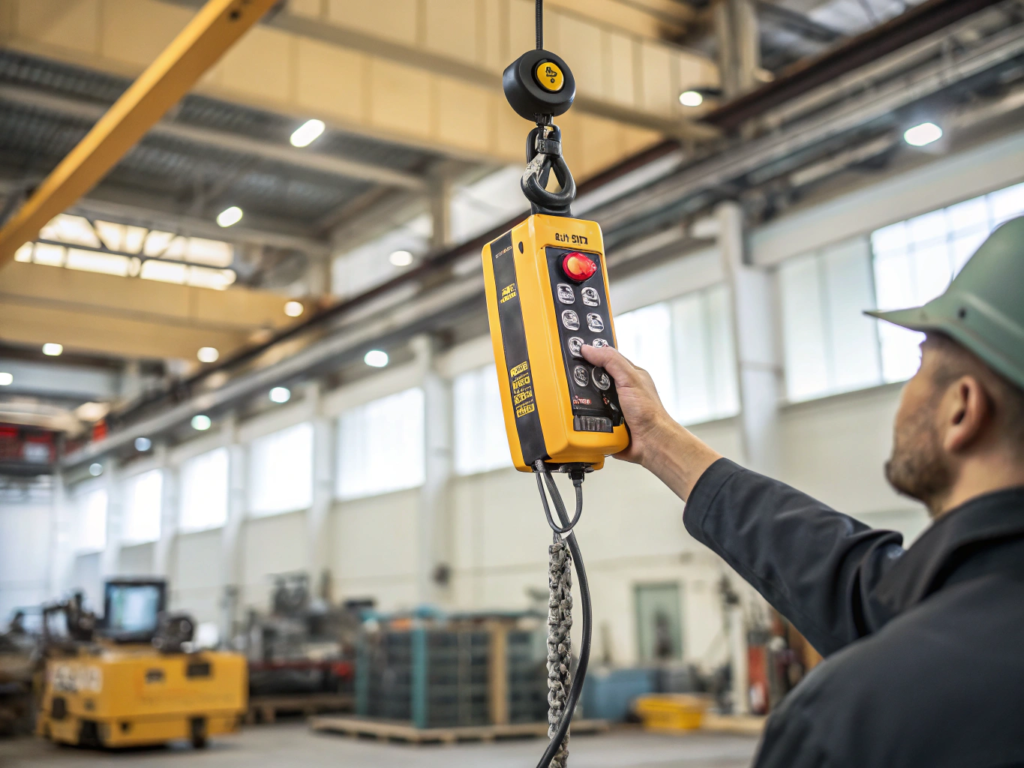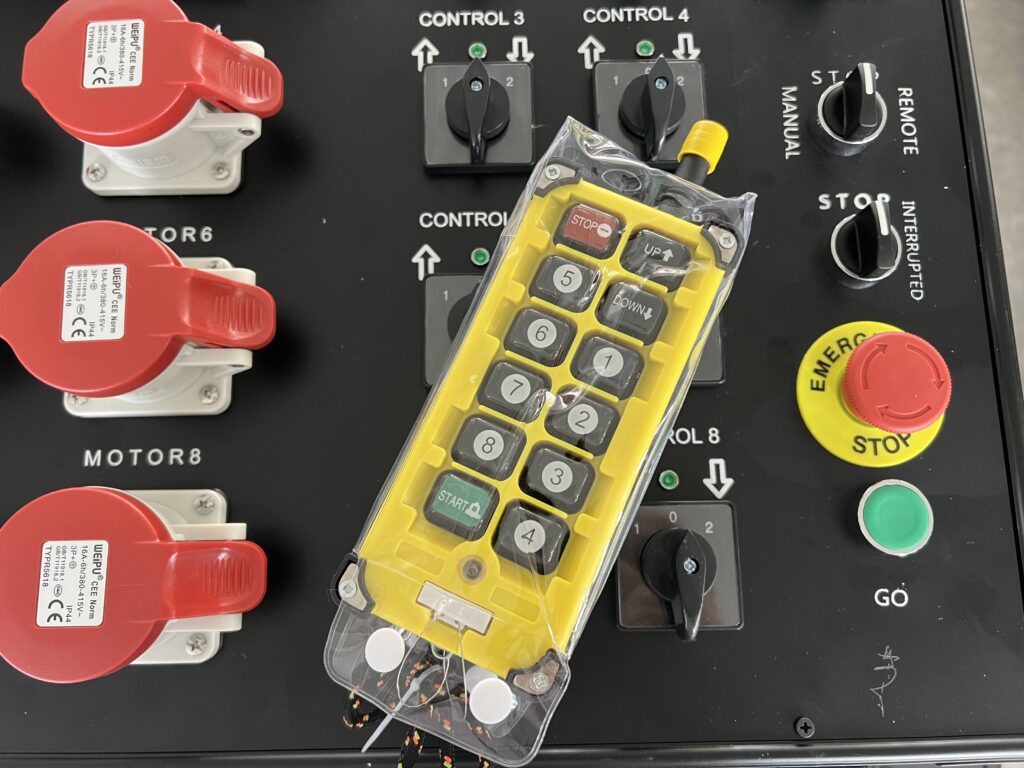Getting close to a load isn’t always safe—or necessary.
Yes, electric hoists support both pendant (wired) and remote (wireless) controls. Remote control improves safety, flexibility, and efficiency in hazardous or large-area operations.
I’ve worked on job sites where pendant control was the only option. Until someone got too close during a load swing. Since then, we always ask: “Can this be done remotely?”
[Table of contents]
- What is a pendant controlled electric hoist?
- How does remote control of a hoist work?
- What are the pros and cons of pendant vs. remote control?
- When should I choose remote control for an electric hoist?
- Are remote-controlled hoists safe and reliable?
What is a pendant controlled electric hoist?
This is the most traditional control method.
Pendant-controlled hoists use a wired push-button device attached to the hoist or trolley system, allowing close-range manual operation.

Dive Deeper
Pendant control is:
- Cost-effective and widely supported
- Reliable in EMI-heavy environments
- Preferred for small workshop and fixed-point lifting
But it limits movement, requires the operator to walk with the load, and can be dangerous in cramped or hazardous areas.
How does remote control of a hoist work?
It uses radio frequency—just like garage doors or drones.
Remote-controlled hoists operate wirelessly via a handheld transmitter, communicating with a receiver installed on the hoist unit.
Dive Deeper
Key components:
- RF transmitter with buttons or joysticks
- Receiver installed on the hoist body
- Dual-channel systems often include emergency stop, speed control, and interlocks
Modern systems support:
- 2.4 GHz spread-spectrum or 433 MHz frequency
- Multi-unit pairing (one remote, many hoists or vice versa)
- Fail-safe tech to prevent runaway activation
What are the pros and cons of pendant vs. remote control?
Each control type has strengths depending on your use case.
Pendant controls are simple and reliable, while remote controls offer greater safety and mobility.
Dive Deeper
| Feature | Pendant Control | Remote Control |
|---|---|---|
| Wiring | Wired, fixed | Wireless, mobile |
| Operator Distance | Must stay close to hoist | Can operate from 30+ meters away |
| Installation Cost | Lower | Slightly higher (hardware + setup) |
| Safety | Risk in tight spaces | Safer for hazardous or swinging loads |
| Maintenance | Low | Battery and signal check needed |
| Interference Resistance | High | May need shielding in RF-heavy areas |
When should I choose remote control for an electric hoist?
If you value flexibility, remote is the better option.
Choose remote control for large workspaces, hazardous zones, or multi-point lifting—especially when safety or visibility is a concern.
Dive Deeper
Scenarios where remote wins:
- Steel mills or foundries
- Construction sites with restricted movement
- Multi-station work areas
- High bay warehouses with limited floor space
Meanwhile, pendant control works well in:
- Fixed gantry crane setups
- Small shops
- Maintenance tasks requiring tactile control
Are remote-controlled hoists safe and reliable?
Yes—if installed properly and operated correctly.
Remote-controlled hoists are reliable in industrial settings and meet safety standards like EN ISO 13849-1, FCC, and CE certifications.
Dive Deeper
Look for features like:
- Fail-safe shutdown
- Dual-channel signaling
- Emergency-stop redundancy
- Battery backup (some offer USB charging)
- Lockout for unauthorized use
Some systems even support feedback alerts—vibration or LED indicators to confirm signal receipt and operation success.
Conclusion
The right control system keeps you efficient—and keeps you out of harm’s way.



